What Is Latin American History What Is Art Appreciation Class
In the early nineteenth century, battle cries for independence spread throughout Latin America (after hundreds of years of European control), including United mexican states's famous Miguel Hidalgo y Costilla in Dolores, Mexico on September 16, 1810."> Grito de Dolores (September 16, 1810). Merely freedom came with new challenges. Revolutionaries and ordinary citizens akin asked: Who are we as a nation? What is our national identity? As a consequence, Latin Americans witnessed tremendous political, cultural, social and artistic transformations.
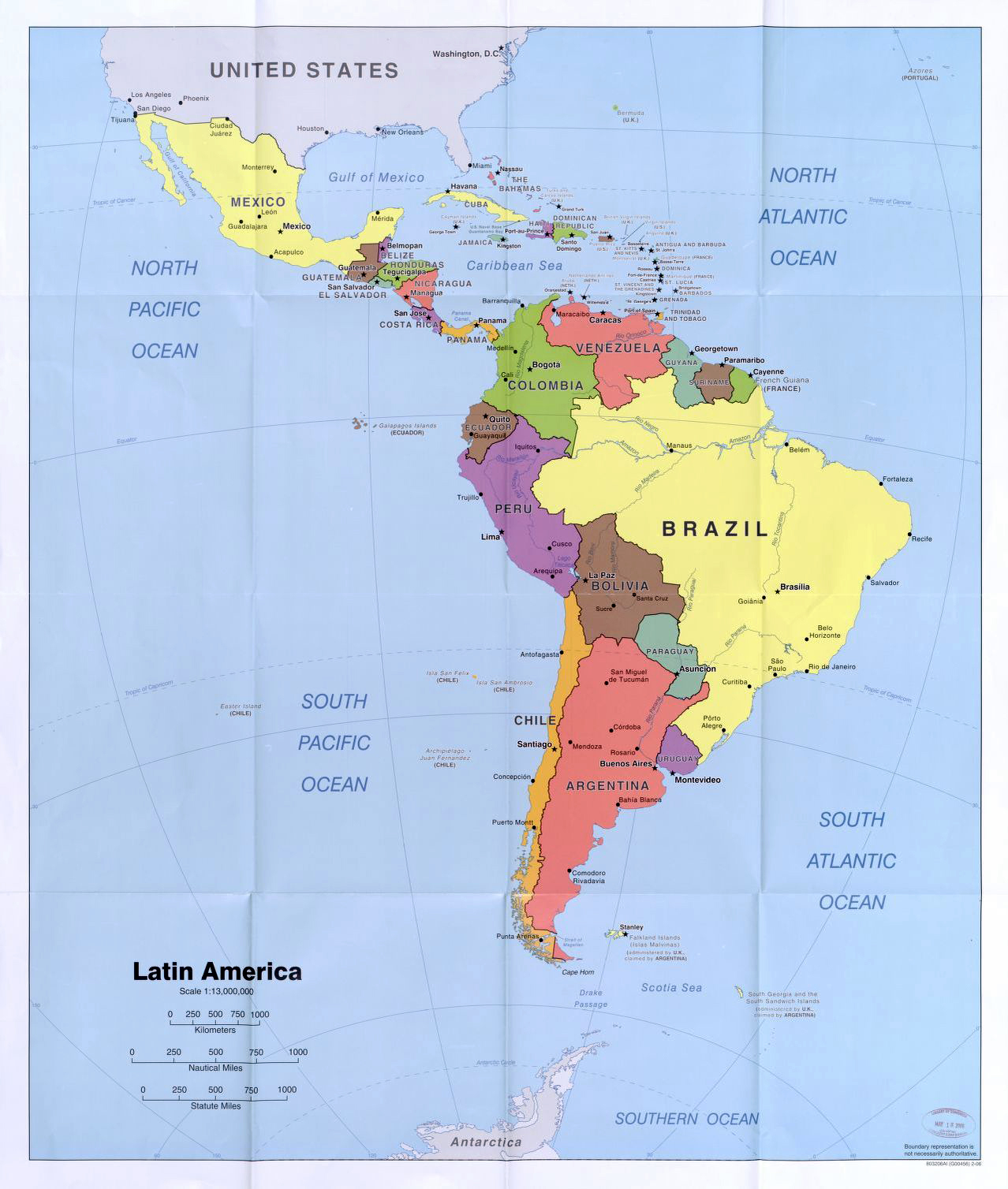
Map of Latin America, published Washington, D.C.: Central Intelligence Agency (Library of Congress)
Formerly known as viceroyalties (which were subject to dominion by the Spanish Crown), newly contained countries began to emerge, including United mexican states, which was liberated in 1821. Many of these countries had been freed past Creoles like Simón Bolívar, who helped secure independence for Colombia, Republic of ecuador, and Venezuela and José de San Martín, the liberator of Argentina, Republic of chile, and Peru. No longer subject to Spanish dominion, these countries were now confronted with the daunting task of articulating a sense of national identity that could brand sense of the colonial past and carve an independent path forward. Early expressions of nationalism (loyalty to a nation) focused primarily on creating monuments to revolutionary heroes, though we besides see it in the people and narratives depicted in fine art.
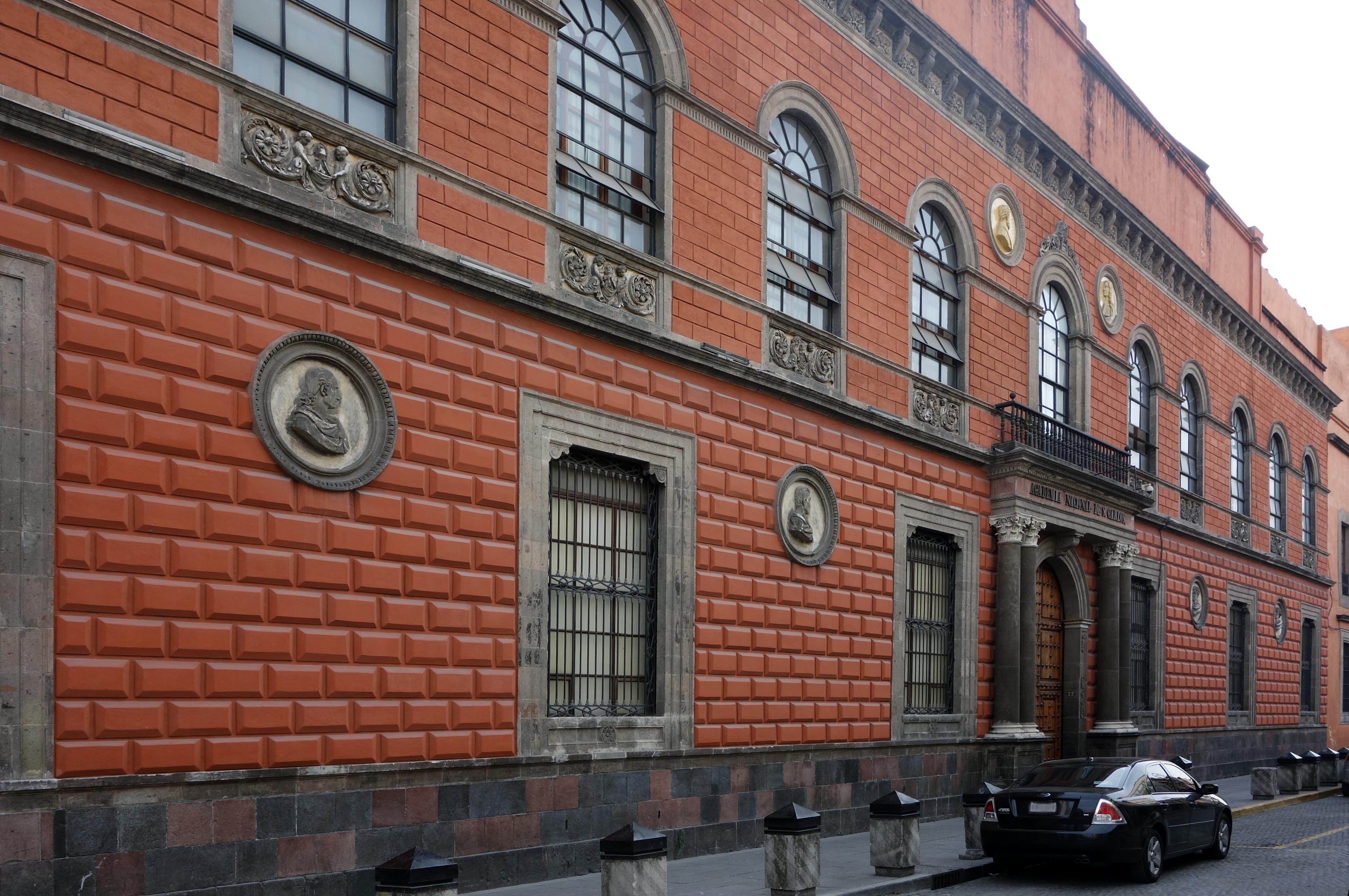
Site of the Academy of San Carlos in Mexico City since 1791 (photo: Steven Zucker, CC BY-NC-SA 2.0)
Fine art schools that had in some cases been established nether Spanish dominion, helped to clear a national creative tradition. These academies were informed by traditional models of art teaching, and emulated the European art academies. Art academies were as well hubs in a global network, since students and professors traveled abroad and schools attracted strange artists. This in turn fostered artistic traditions that became more varied, and more modern. This chapter explores both these formal institutions and the international transatlantic artists who shaped nationhood in post-independent Latin America.
Read introductory essays about 19th-century Latin America

Latin American art: an introduction
Read At present
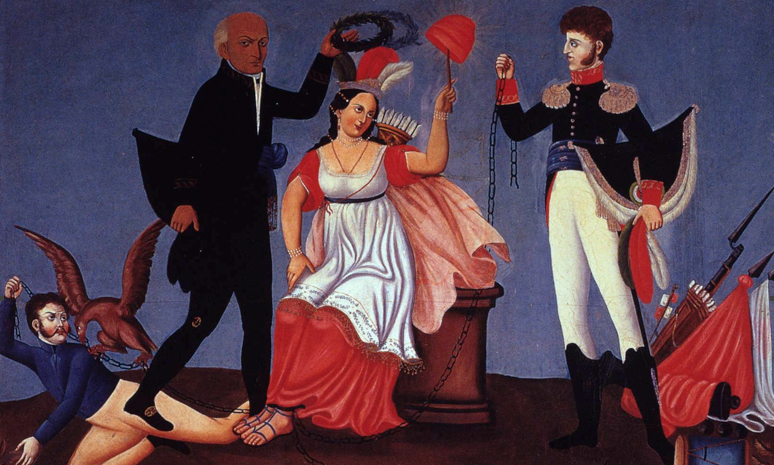
Mexican Independence: an introduction
Read Now

Independence from Spanish rule in Due south America: an introduction
Read Now
/3 Completed
Art Academies: A Bastion of Classicism
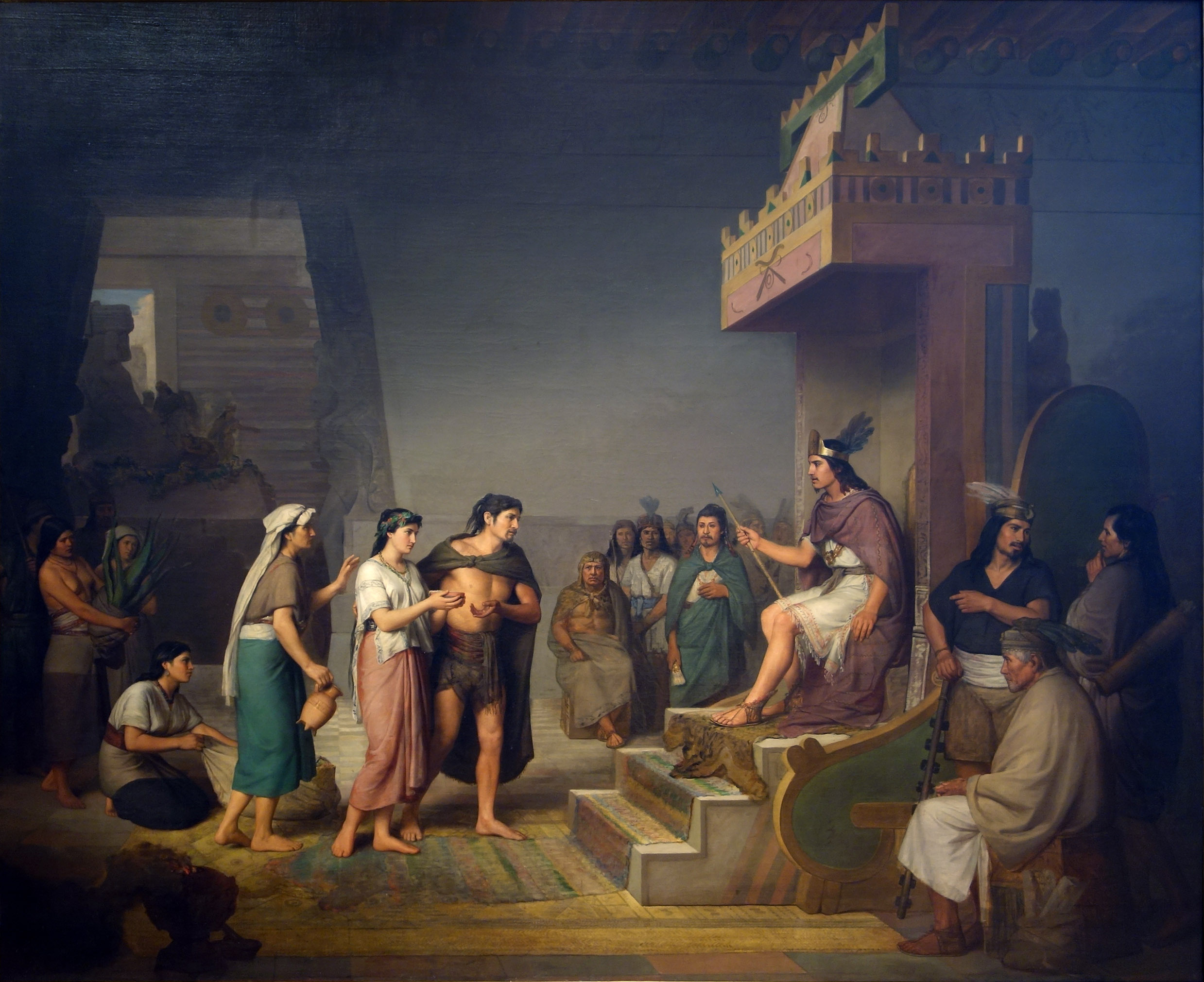
José María Obregón, The Discovery of Pulque, 1869, oil on canvas, 189 x 230 cm (Museo Nacional de Arte, INBA (MUNAL), Mexico City)
At first, official art academies defined the national artistic discourse, replacing colonial modes of artistic teaching, like social club systems and artist workshops, which had focused primarily on religious subject thing and worked in the service of the church. With political independence came both a stylistic and thematic shift. Artists trained in academies, for case, depicted the heroism and patriotism of their fight for independence by painting portraits of the liberators and martyrs who had become national heroes, and by depicting pivotal battles in the fight for independence.
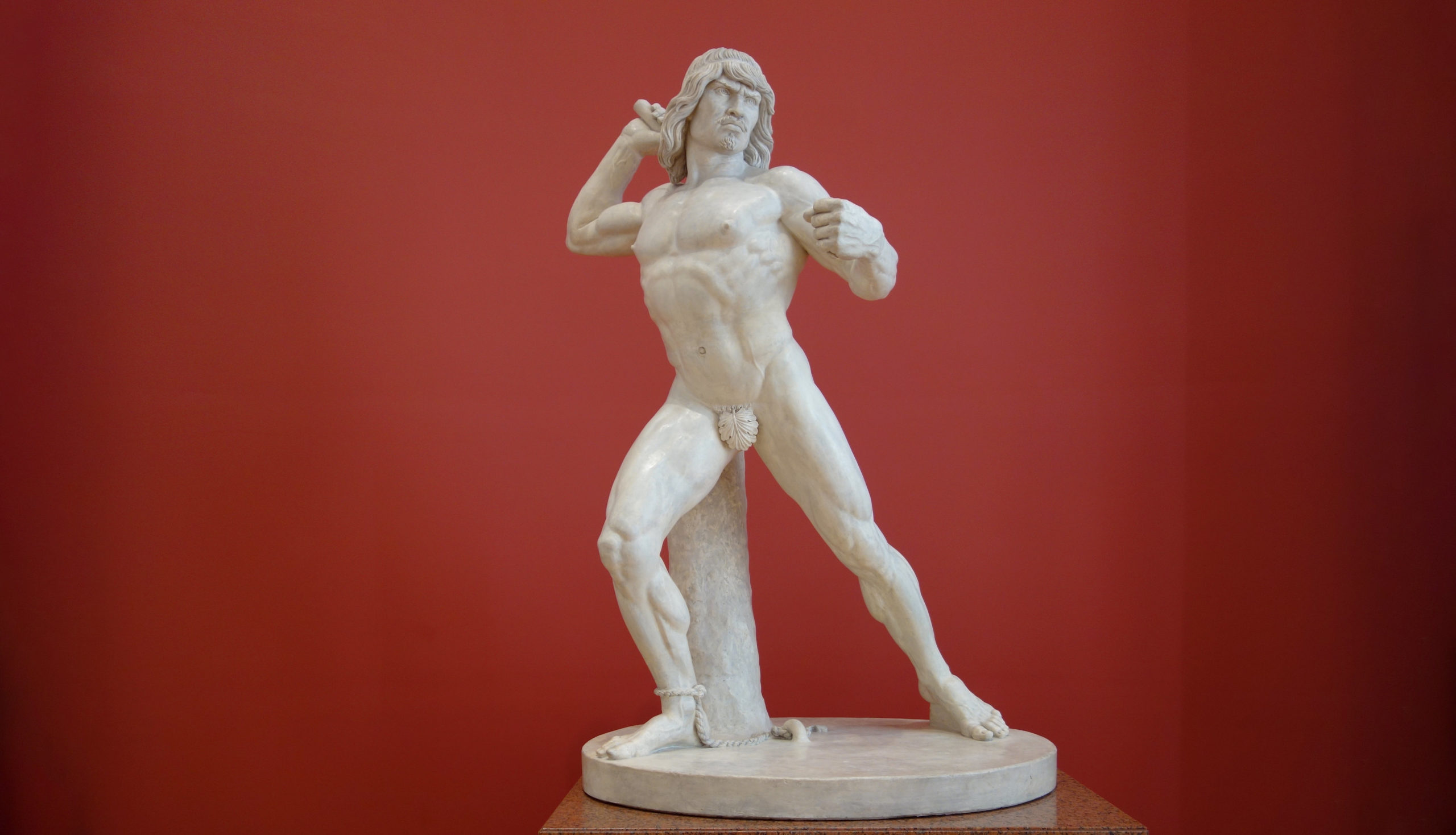
Manuel Vilar, Tlahuicole, the Tlaxcaltecan General, Fighting in the Gladiatorial Cede, 1851, painted plaster, 216 x 135 10 132 cm (Museo Nacional de Arte, INBA (MUNAL), Mexico Metropolis, photo: Steven Zucker)
The University of San Carlos was the earliest art academy of the Americas. Information technology was established in Mexico City in 1785, 30-6 years earlier independence. Information technology trained emerging painters, sculptors, and architects in the Greco-Roman classical tradition, where artists were encouraged to study and idealize the man body. It also supported their professional person careers, introduced them to exhibition and travel opportunities, and most chiefly, served as an example for future art schools in the region, such as the Cuban University of San Alejandro founded in 1818.
At the Academy of San Carlos, artists such as Manuel Vilar adapted the heroism and idealization of classical art to fit the Mexican past. This resulted in a delineation of the Tlaxcaltecan warrior equally a heroic and idealized figure, a sharp contrast to before depictions that often displayed victimized and enslaved Indigenous peoples. Vilar's sculpture non just "classicized" the Indigenous past (by making an Indigenous Nahua warrior in the fashion of an aboriginal Greek or Roman sculpture), just also introduced the subject of the nude to Latin American art. The figure was not merely naked, pregnant unclothed, only rather nude, implying that his nakedness was done in the service of art and for greater symbolic meaning.

Felipe Santiago Gutiérrez, The Huntress of the Andes, c. 1891, oil on canvass, 102 x 159 cm (Museo Nacional de Arte, INBA)
However, it was not until the belatedly nineteenth century that the practice of painting, drawing, and sculpting from the nude gained currency beyond Latin America. And fifty-fifty and so, the female nude encountered resistance in this securely bourgeois Catholic region. Even in the late 19th century, the Latin American fine art establishments rejected allusions to sexuality, even if the nude was mythological, as in the case of Huntress of the Andes (1891), or biblical, as in the case of Levite Woman from the Ephraim Mountains (1899).

Epifanio Garay, Levite Woman from the Ephraim Mountains, 1899, oil on sheet, 139 ten 198.5 cm (National Museum of Colombia, Bogotá)
It was clear to emerging Latin American artists at this time that the academies were conservative and rooted in tradition (every bit they were in Europe); and then, in order to seek out more modernistic styles and subjects, likewise as art commissions, they would need to travel abroad.
Read essays and watch videos about art academies

The Academy of San Carlos: The earliest art university in the Americas, founded in 1785 under the leadership of Castilian engraver Jerónimo Antonio Gil.
Read Now
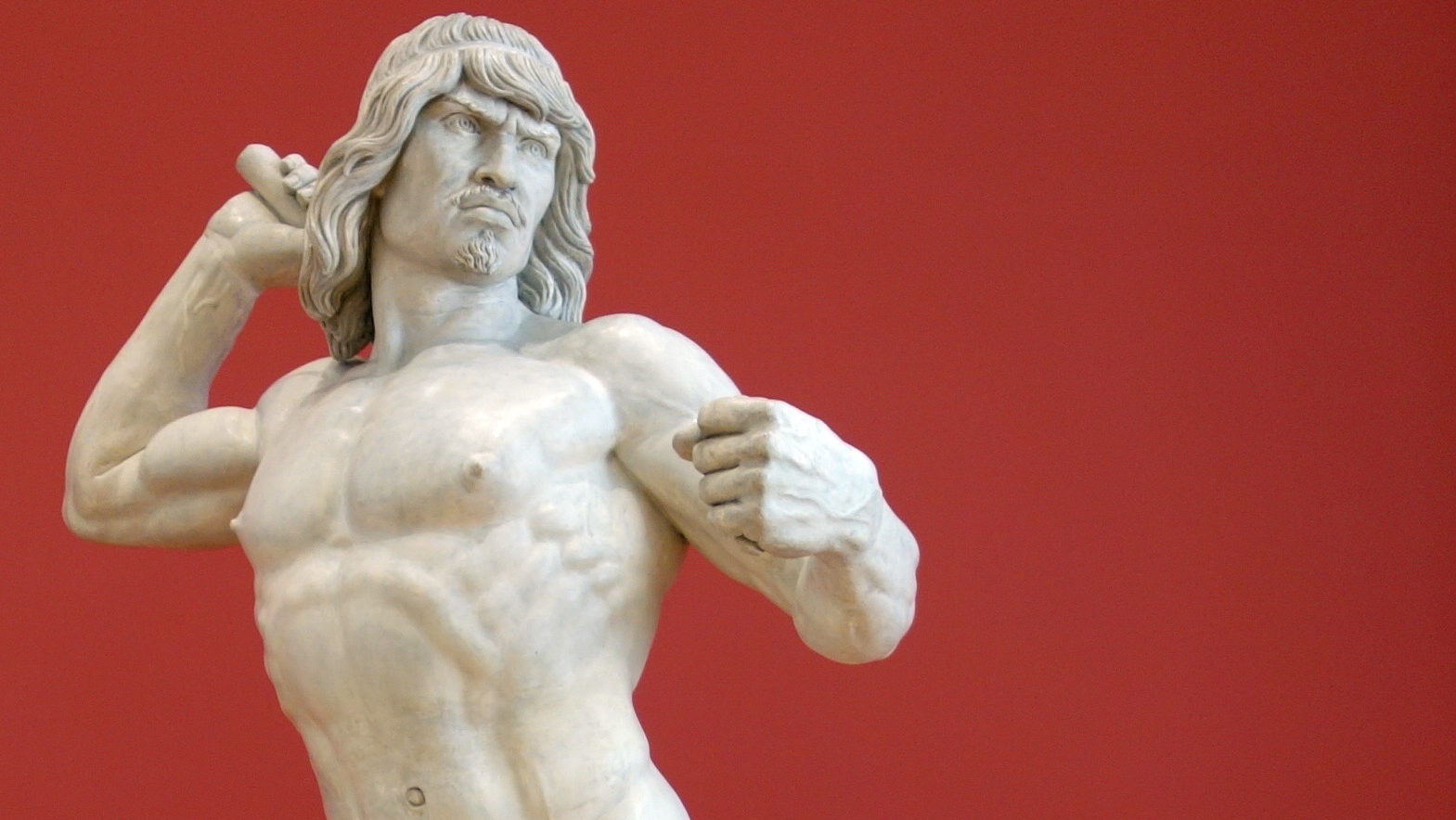
Manuel Vilar, Tlahuicole: This sculpture was the first at the Academy to explicitly describe the pre-Hispanic past.
Read Now
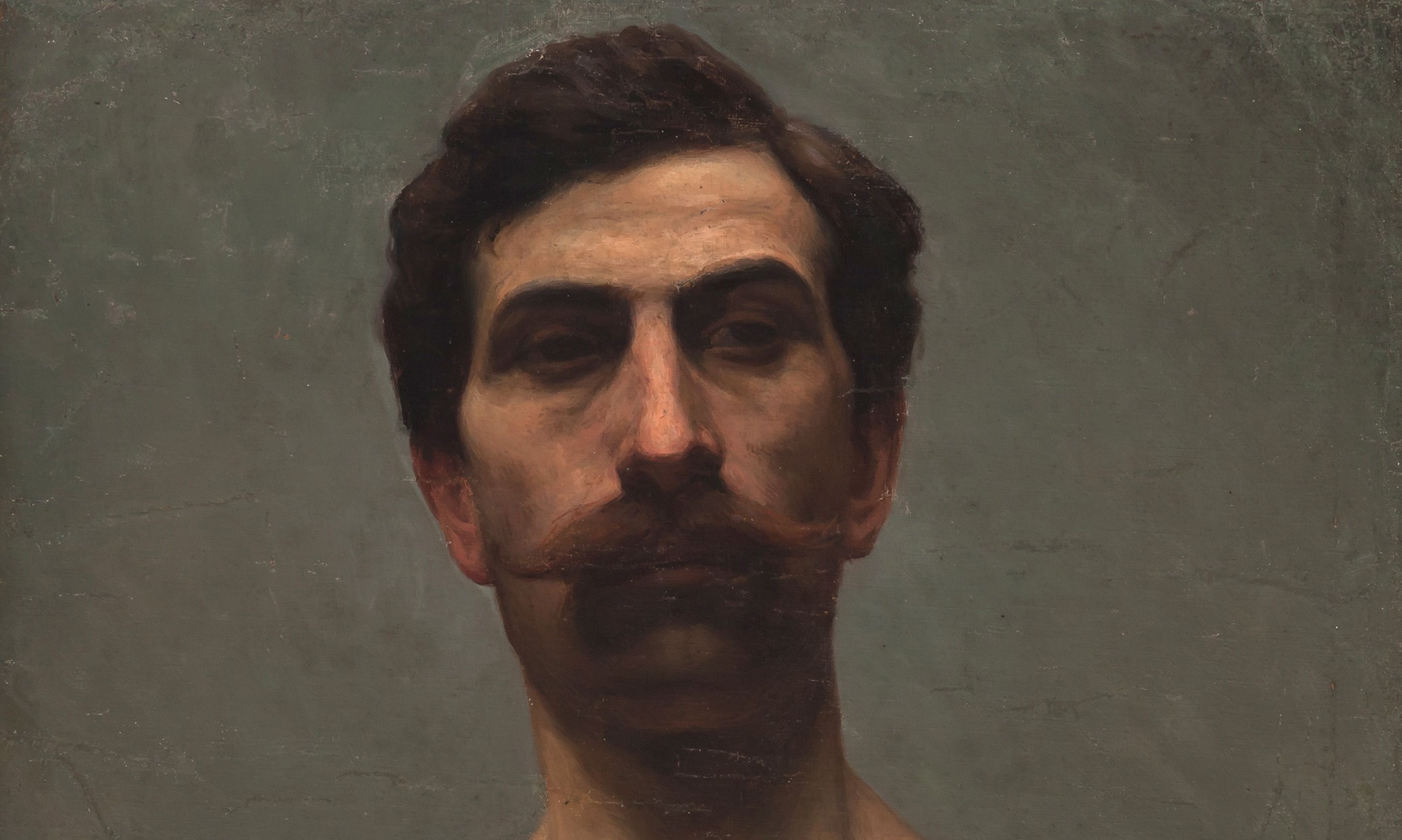
The challenge of the nude in 19th-century Latin American painting: Latin American artists who wished to excel in their ability to pigment the nude had to seek an artistic education either in United mexican states or abroad in cities like Paris or London.
Read Now
/three Completed
Costumbrismo: In Search of Nationalism
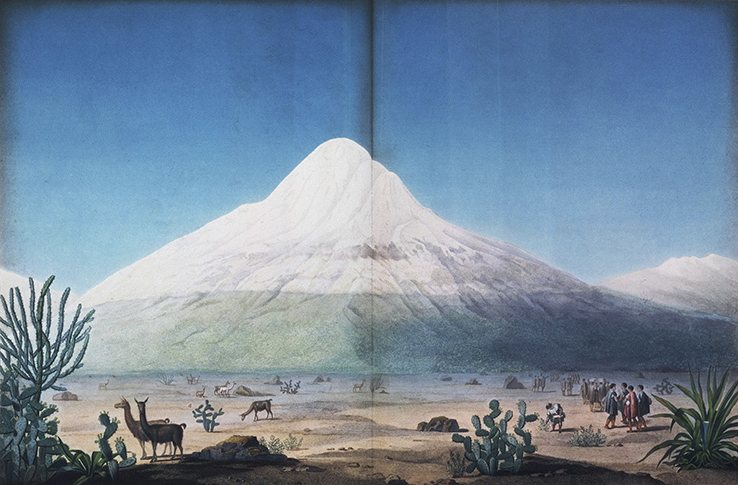
Alexander von Humboldt, "Chimborazo Seen from the Tapia Plateau," Ecuador, hand-colored engraving, in Vues des Cordillères et monuments des peuples indigènes de l'Amérique, 1810
After independence, and confronting the properties of these official academies, Latin American countries entered another era of global substitution, one that echoed the exchanges of the colonial era, a period characterized by an influx of foreigners and an exodus of locals. Foreign scientists, writers, and artists arrived to explore and document what they saw in Latin America, many following in the footsteps of German scientist Alexander von Humboldt and which included the U.S. painter Frederic Edwin Church. They documented the flora and fauna well equally its people, traditions, local sociology, and genre scenes—a practise known as costumbrismo.
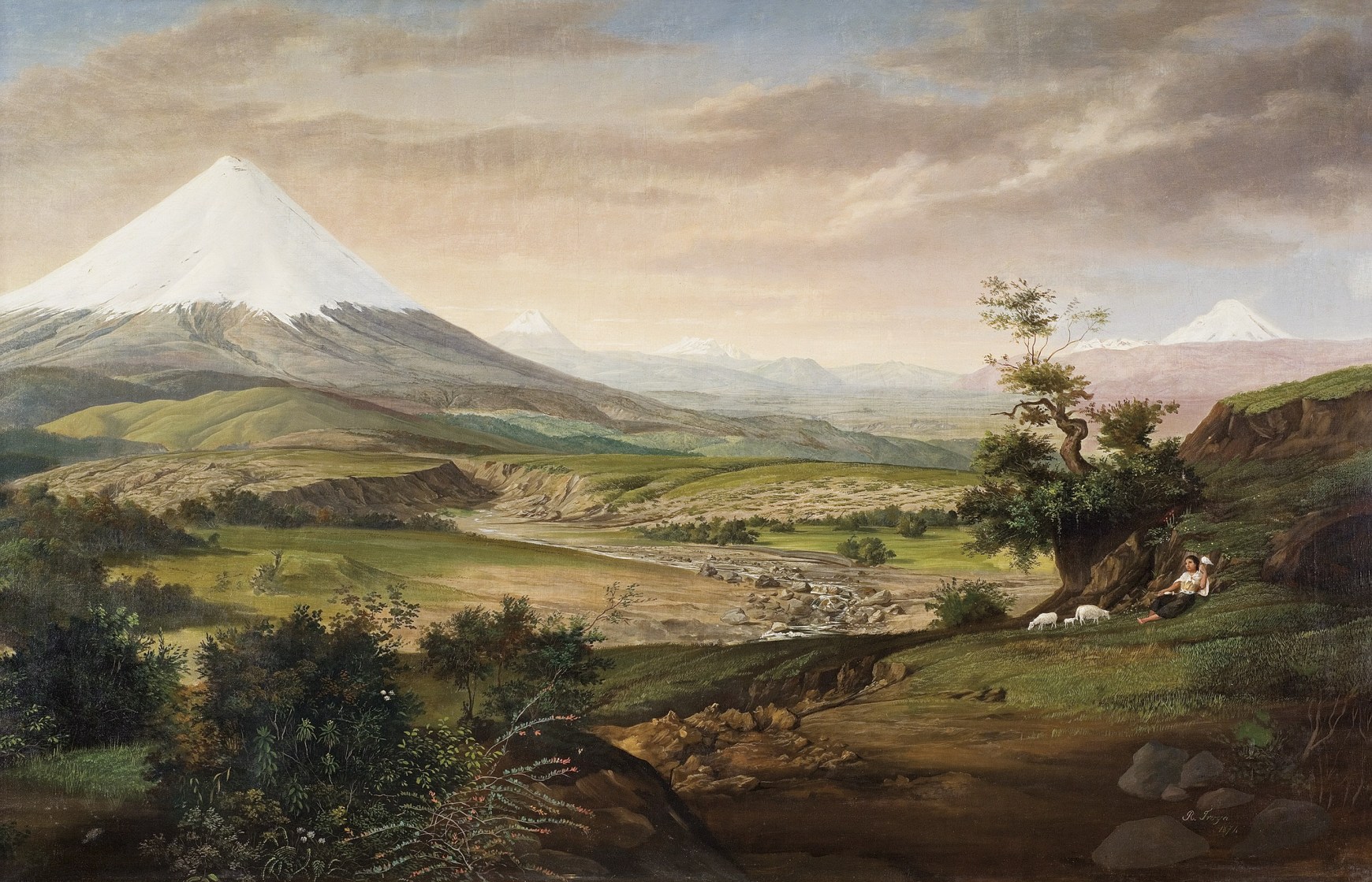
Rafael Troya, Cotopaxi, 1874, oil on canvas, 93 x 161 cm (Museo 'Guillermo Perez Chiriboga' del Central de Republic of ecuador)
Local artists also surveyed and documented the landscape of these newly liberated countries, like Joaquin Pinto and Rafael Troya, who captured the volcanic peaks of their native Ecuador.
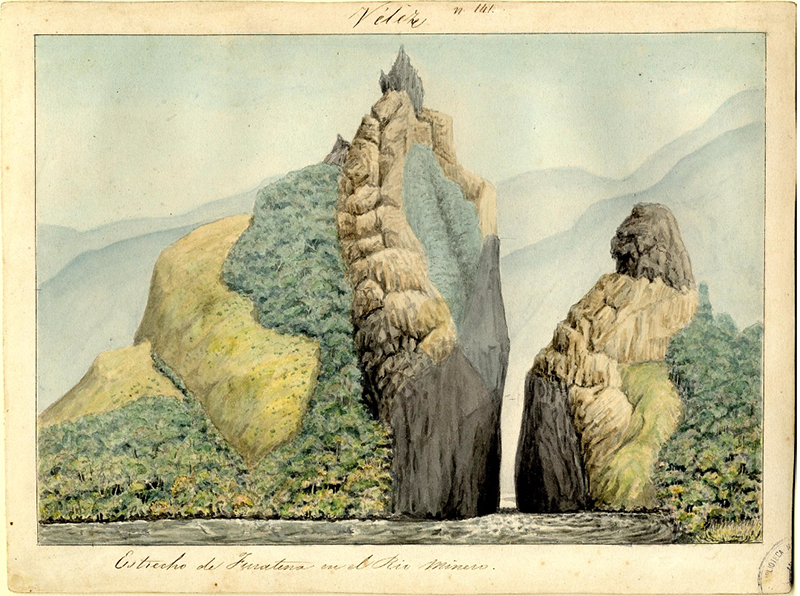
Carmelo Fernández, Province of Vélez, The Strait of Furatena in the Minero River, 1850-51, watercolor on paper (Colombian National Library)
In Colombia, the Comisión Corográfica, which involved artists like Carmelo Fernández, resulted in the creation of some of the first maps and atlas es of the region. Notwithstanding, even this scientific enterprise included the depiction of local types and costumes, demonstrating the blurred boundaries between geographical surveys and costumbrismo .
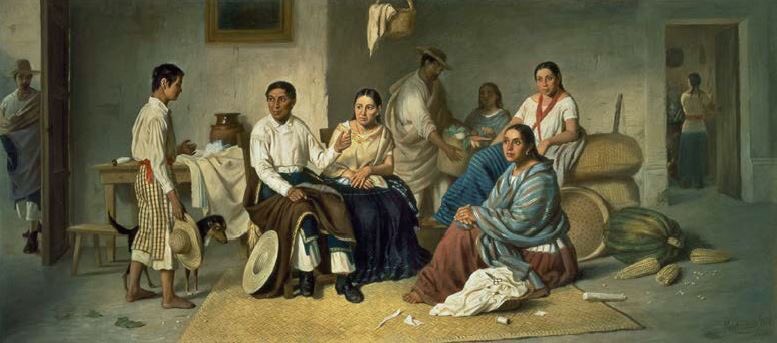
Felipe Santiago Gutiérrez, The Young Indian'south Goodbye, 1876, oil on canvas, 82 x 92 cm (Private Collection, Mexico City)
Felipe Santiago Gutiérrez divers nationalism through the people and customs of his native Mexico. In his depiction of everyday subjects, like The Immature Indian's Farewell , Gutiérrez captured the spirit of costumbrismo , as seen in their traditional Mexican attire and racial diverseness. However, the crisp manner and theatrical limerick of this painting reflects Gutiérrez's training at the academy and abroad, which in plough parallels the narrative itself, the story of a rural Indian male child who leaves for the big city. Indeed, both Gutiérrez and the young Indian speak to the larger trend of cosmopolitanism , the desire of Latin Americans to transcend provincialism and belong to a larger world civilization, either by going to Mexico City or Paris.
Read essays and watch videos related to costumbrismo
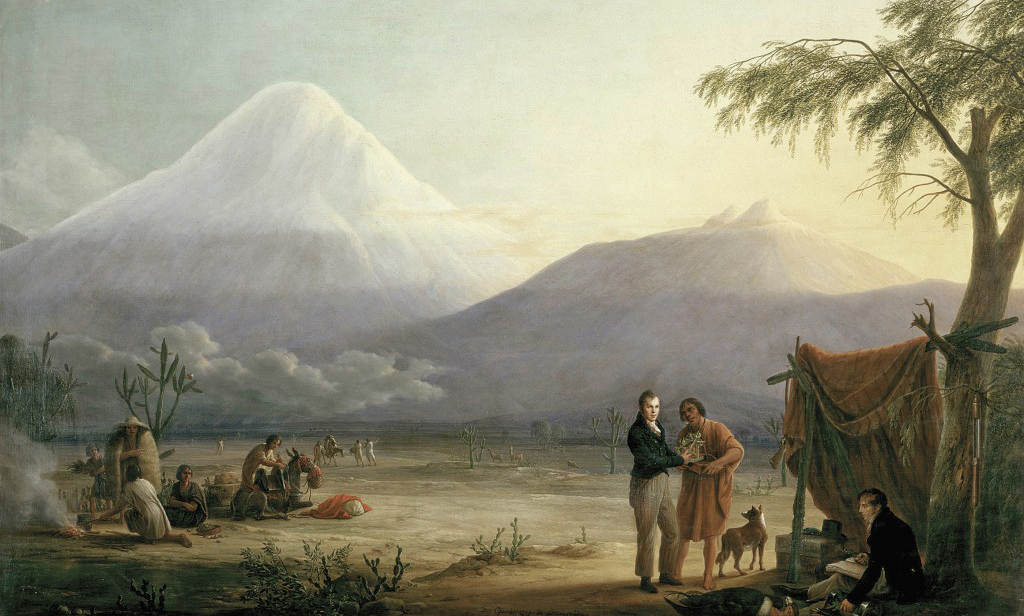
Early Scientific Exploration in Latin America: European explorers enhanced knowledge of the new world, but their efforts were soured past an air of re-conquest.
Read At present
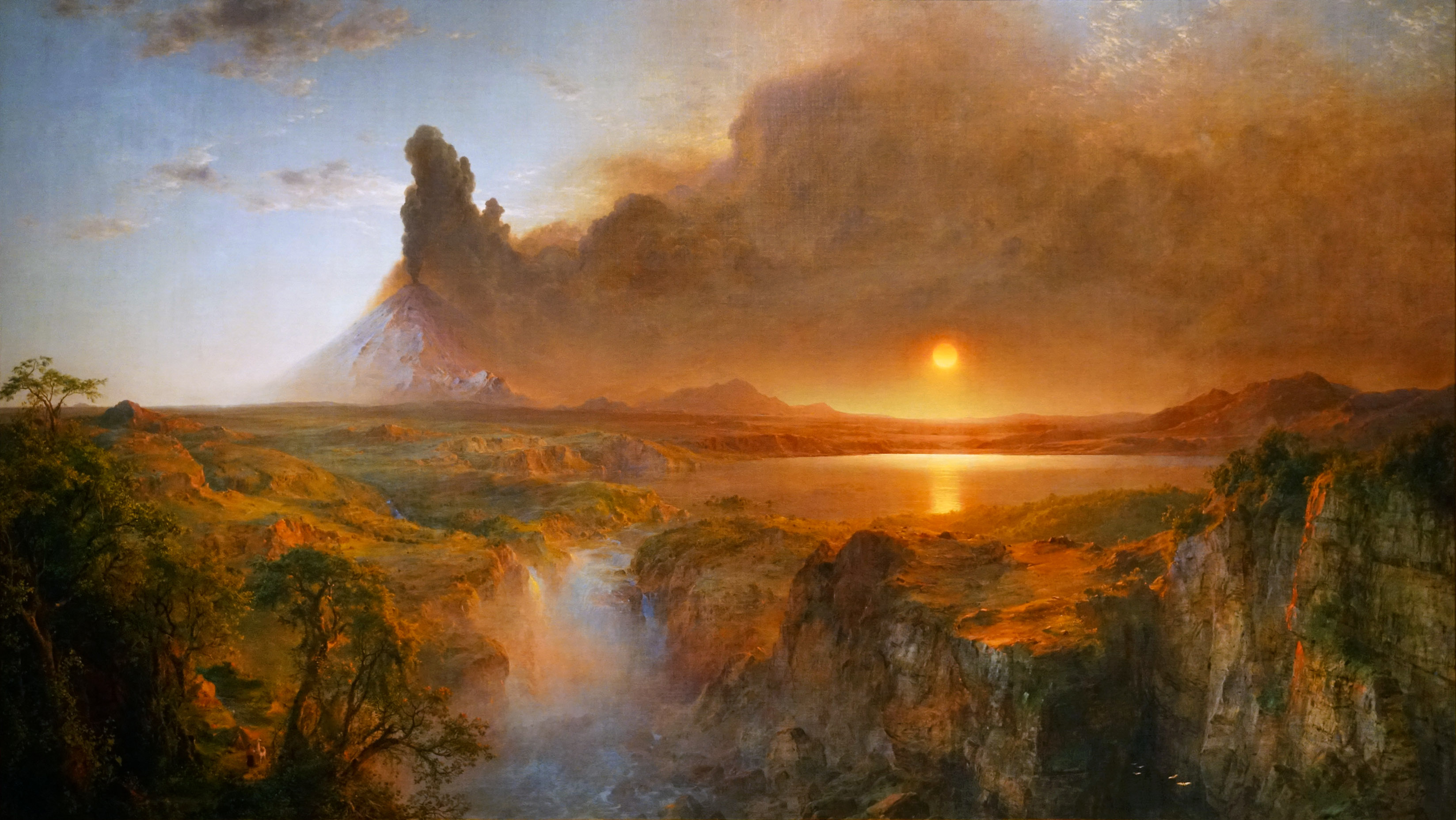
Frederick Edwin Church, Cotopaxi: Its detailed style and interest in natural wonders reflects a fascination with the corking variety of the environs as well as the emerging understanding of the earth's geological evolution.
Read Now

Costumbrismo: A more detailed introduction.
Read Now

Carmelo Fernández, The Strait of Furatena in the Minero River: Nine years and iii different artists later on, the Chorographic Committee had produced both an Atlas of Republic of colombia and many watercolor drawings.
Read Now
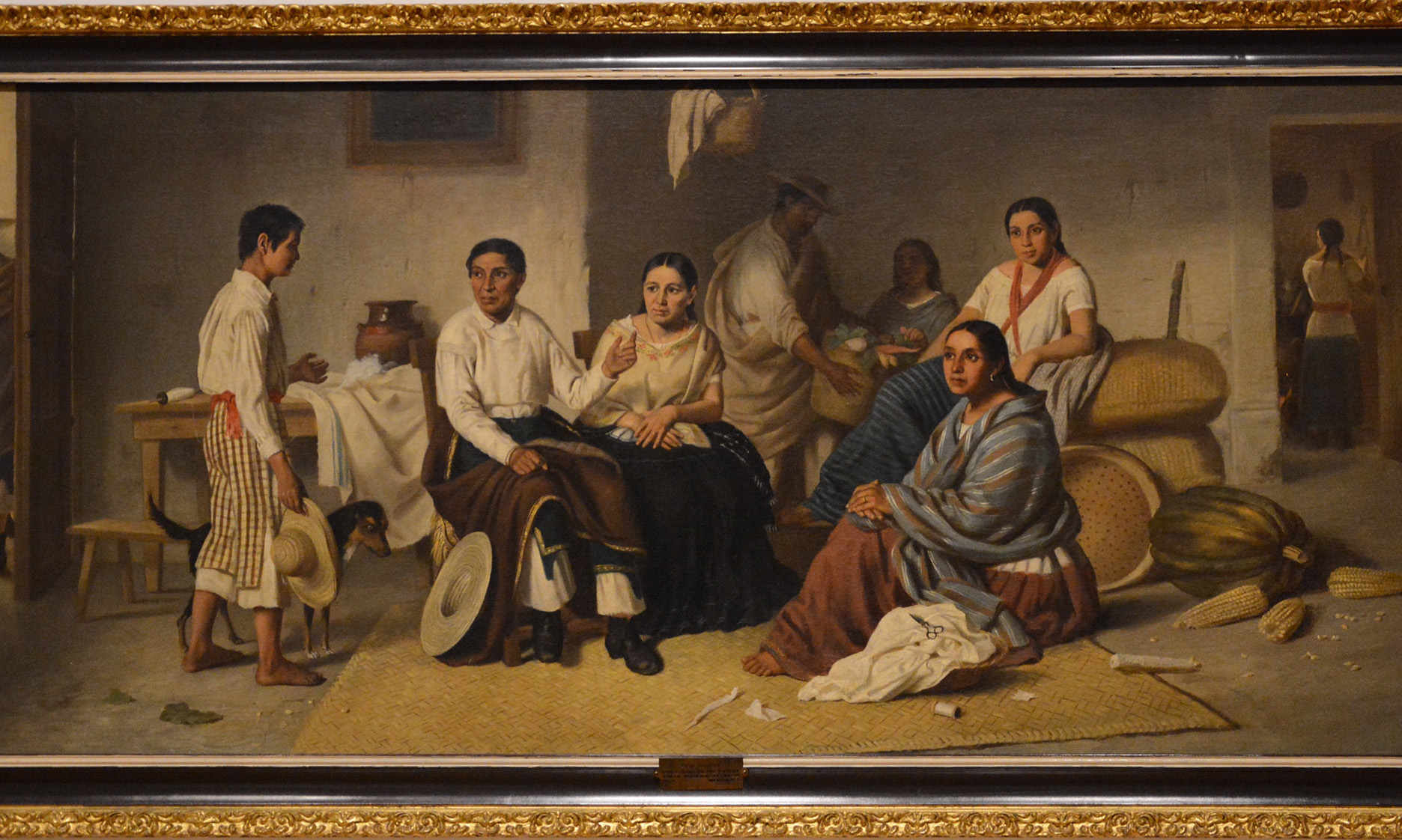
Felipe Santiago Gutiérrez, The Immature Indian's Farewell: Gutiérrez wanted to create fine art that would modify the perception and status of the artist in Mexico.
Read Now
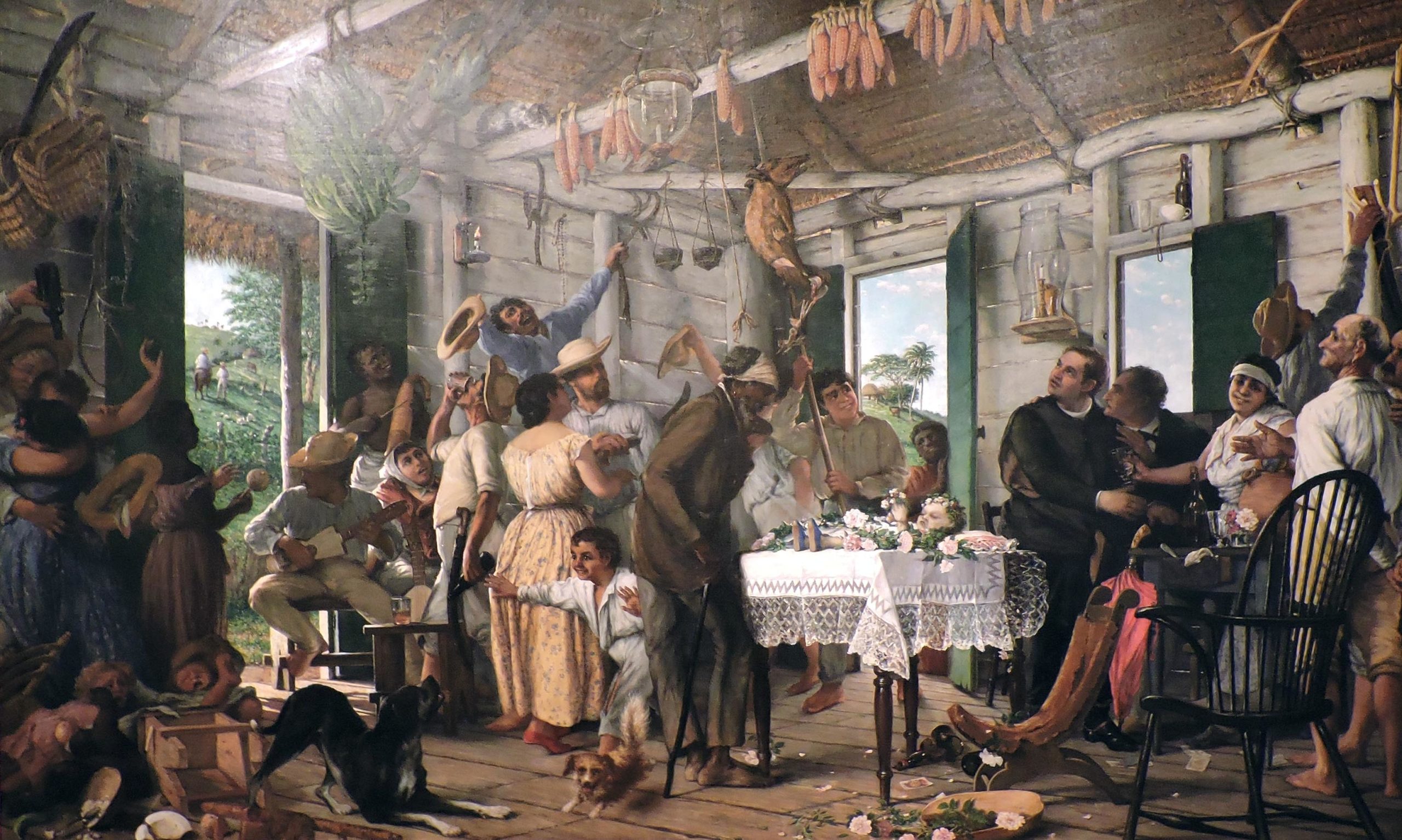
Francisco Oller y Cestero, The Wake: This awe-inspiring painting shows a Puerto Rican rural tradition, the pitiful nevertheless celebratory wake for a small kid.
Read At present
/6 Completed
Transatlantic Voyages: Artistic Pilgrimages to Paris
While some Latin American artists traveled across the continent, others traveled away to Europe in search of more opportunities, whether at art schools or exhibition venues. The institution of art academies, together with the movement of ideas and artists across the Atlantic, introduced a sense of internationalism that came to define the cultural and artistic standards of the nineteenth century and early 20th century.

A bust of Epifanio Garay in Bogotá, Colombia (photograph: Felipe Restrepo Acosta, CC By-SA iv.0)
Latin American artists mostly traveled to Paris, where they encountered an art scene different the one they had left behind, in that it was full of options, in the grade of alternative art studios, supportive art critics, and a diverse artistic customs. Latin American artists felt energized by their trips abroad, and upon their return to Latin America, they encountered new professional opportunities at the academy and beyond, just also a more bourgeois audience.
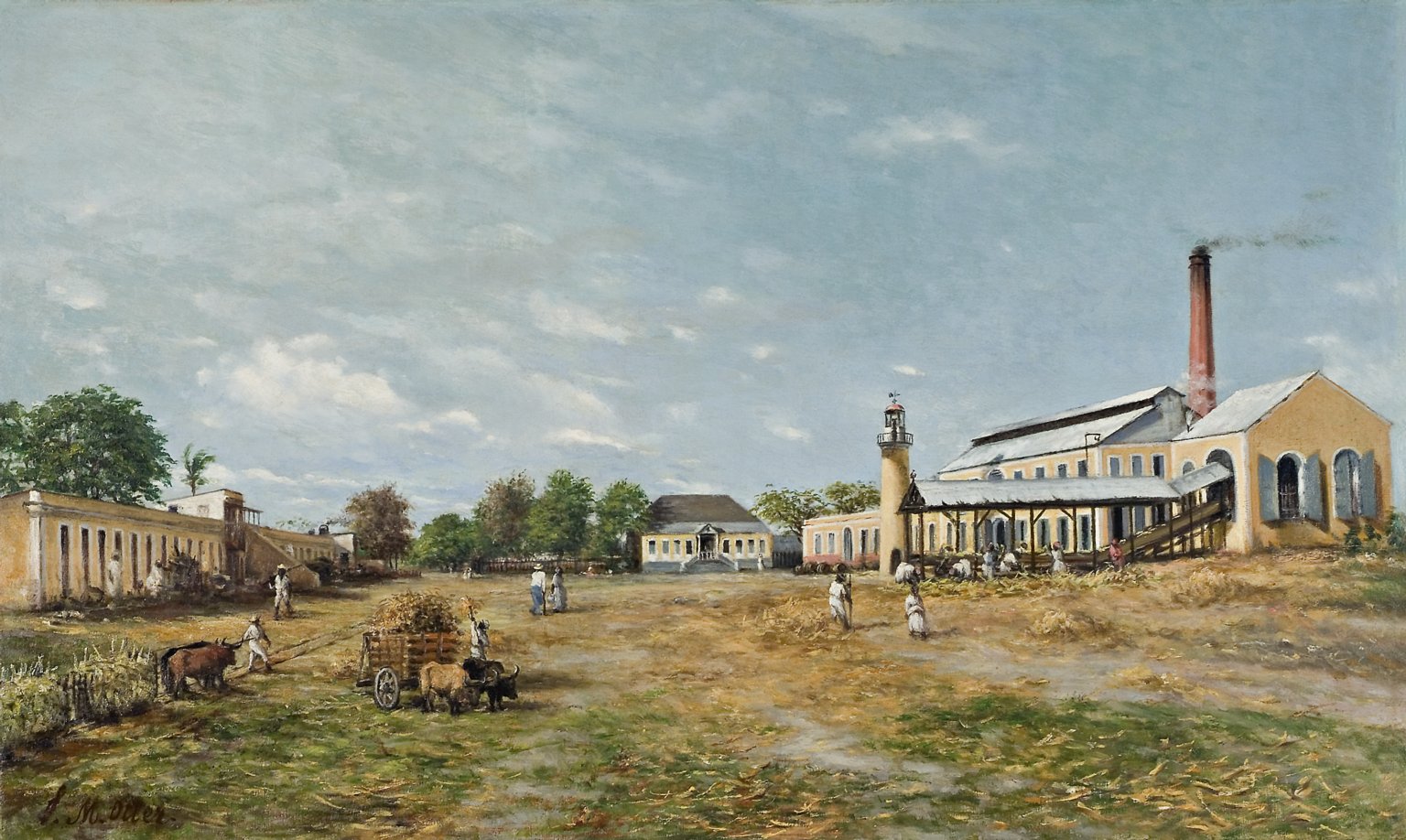
Francisco Oller, Hacienda La Fortuna, 1885, oil on canvas, 66 x 101.6 cm (Brooklyn Museum)
Nevertheless, the lessons learned abroad apace made their way dorsum to Latin America, with painters like Epifanio Garay (Colombia) and Eduardo Sivori (Argentina) who championed the practice of drawing and painting from the alive model and the depiction of the female person nude in art. Others, similar Francisco Oller (Puerto Rico) and Esteban Chartrand (Cuba) blended the loose brushwork and natural light of French Impressionism with national symbols like the palm tree and sugar plantation. Their landscapes evoked a sense of national identity that was rooted in the rural landscapes of the Caribbean.
Read essays almost transatlantic voyages
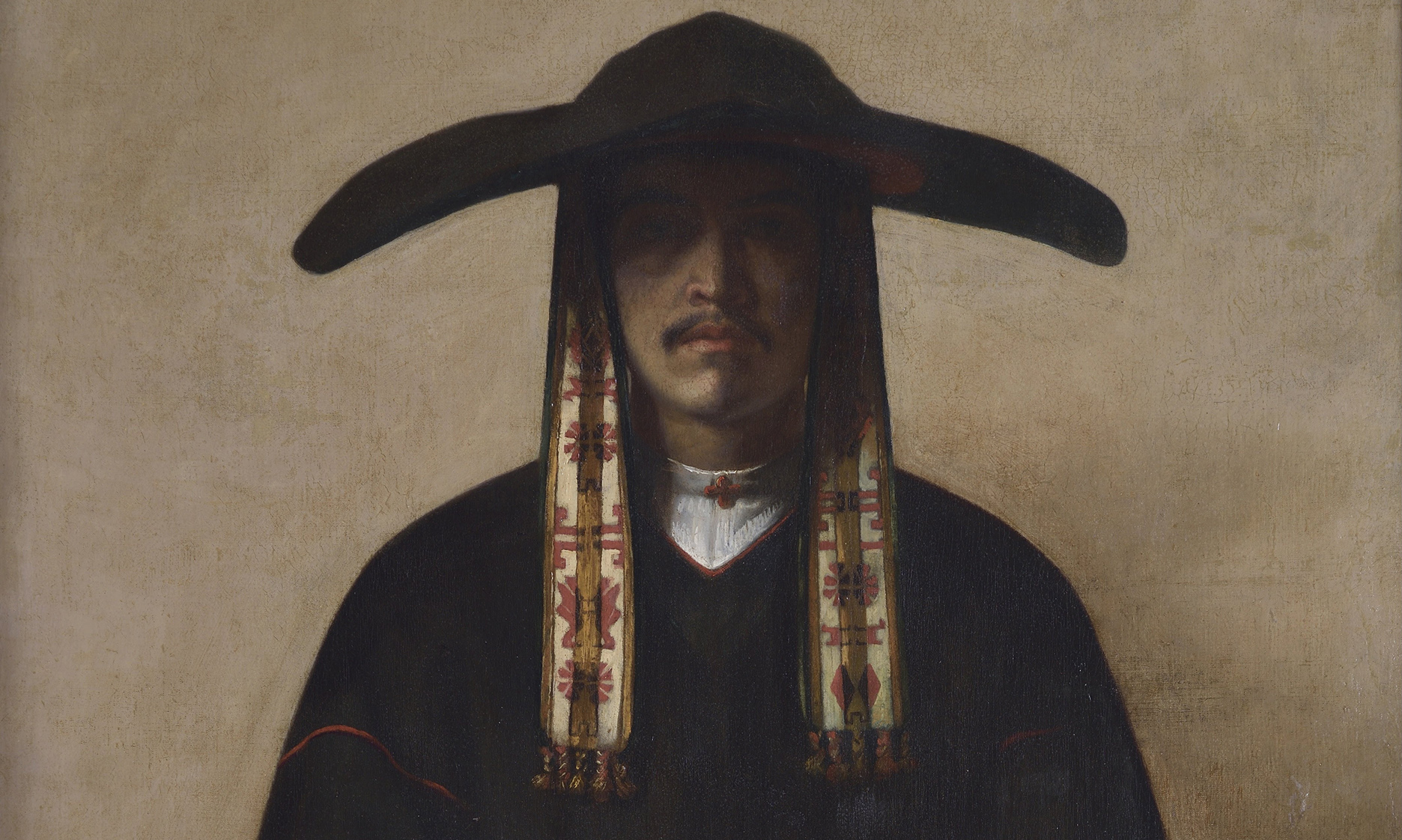
Latin American artistic pilgrimages to Paris: In the 19th century, Latin American artists eagerly traveled to this artistic capital, in part because of the absence of an official art school, established art market, or proper exhibition venues back domicile.
Read Now
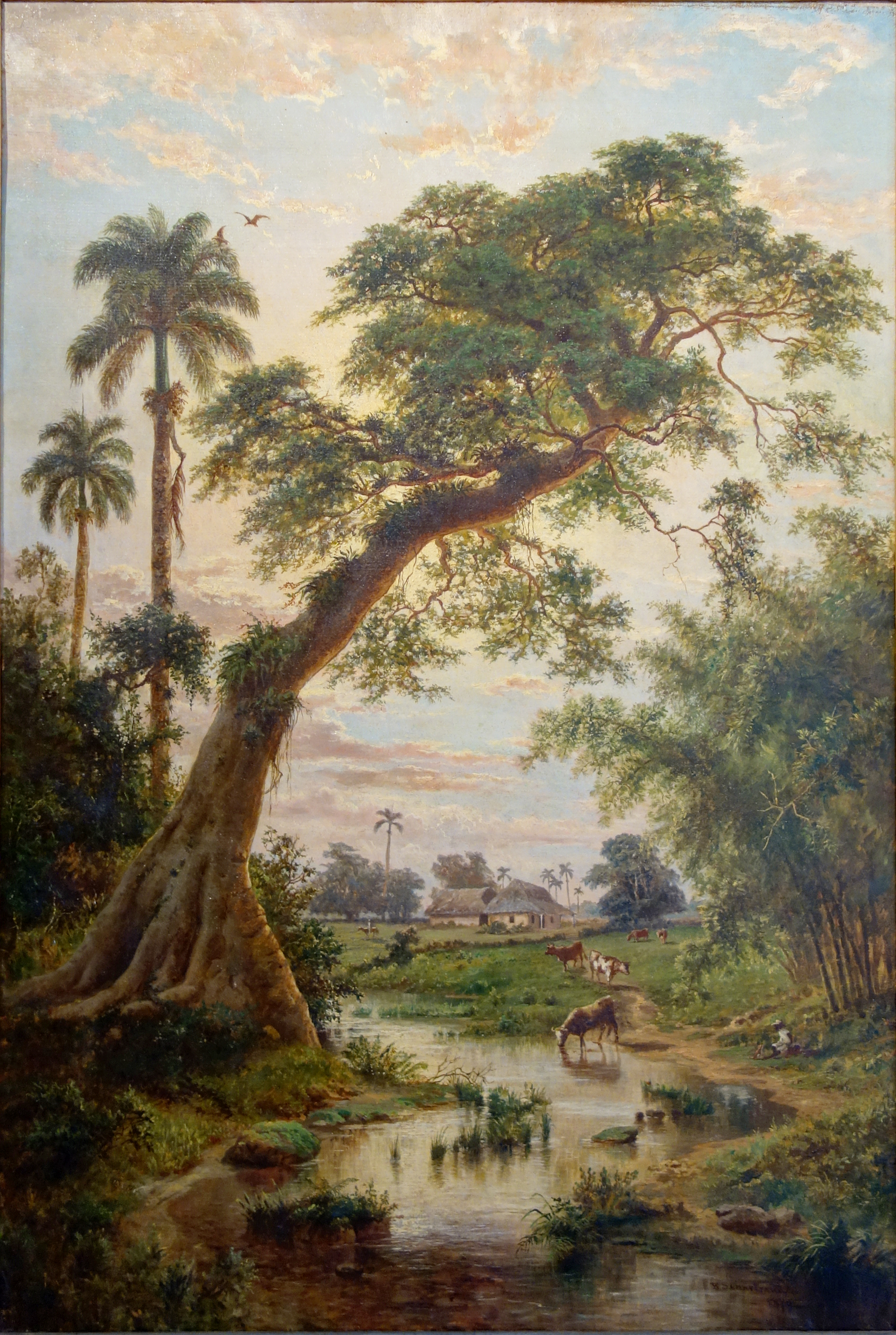
Landscape Painting in Nineteenth-Century Latin America: Artists adult interests in painting the local landscape as a way to create a sense of pride in their land'south past, present, and future.
Read At present
/two Completed
International Exhibitions and Cosmopolitanism
Crafting a sense of national identity at dwelling house was a claiming, however, one time abroad, artists sought to represent their national identity through their art for an audience that was largely indifferent and often misinformed about Latin America. Myths of Latin America abounded in Europe, including those of a "primitive" culture stuck in the by, or of an untamed and wild landscape. Artists encountered stereotypes that underestimated their reputations, professionalism, and internationalism (for instance, both Francisco Laso (Peru) and José Maria Velasco (Mexico) were globe travelers).
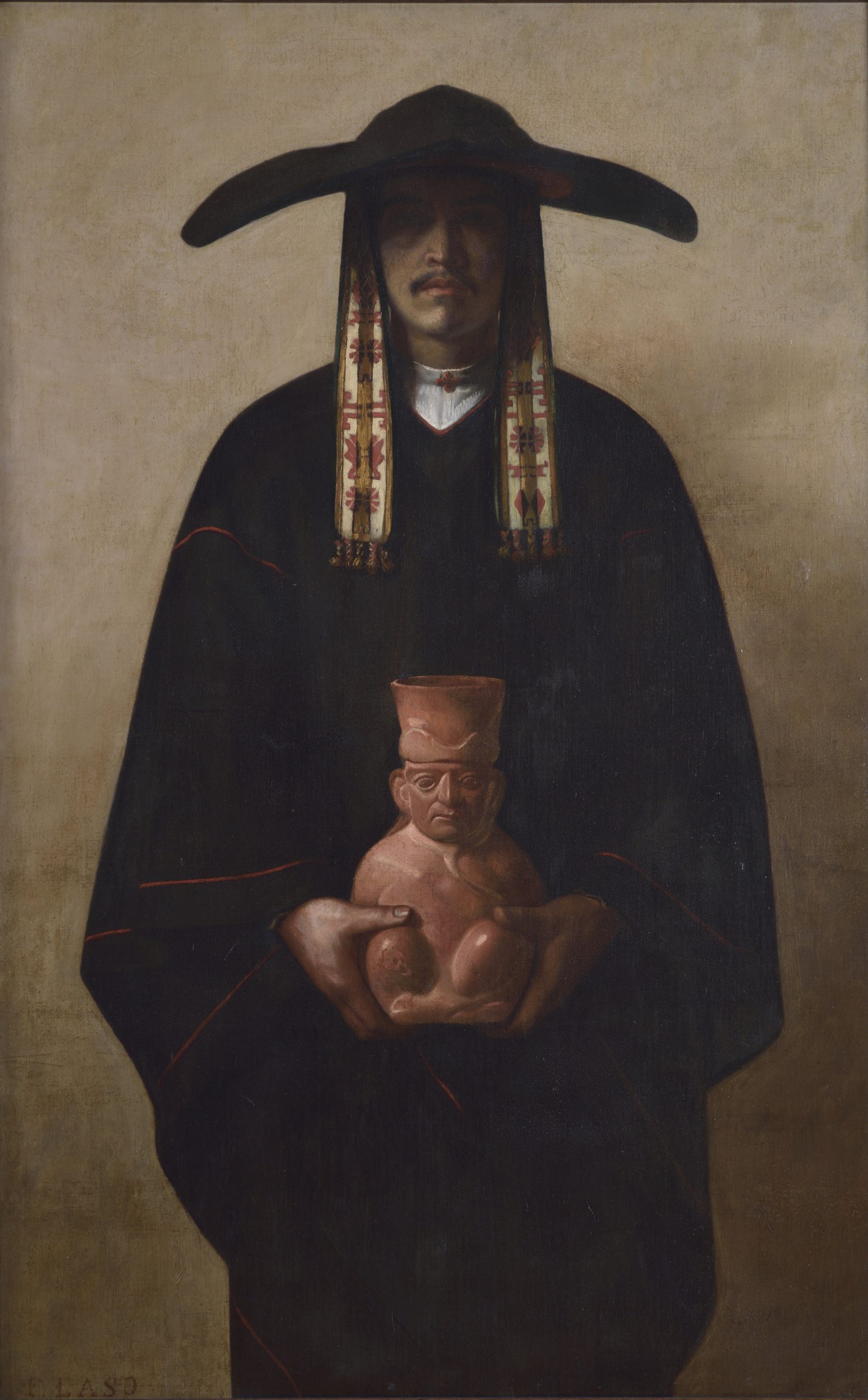
Francisco Laso, Inhabitant of the Cordillera of Peru, 1855, oil on canvas, 138 x 88 cm (Museo de Arte de Lima)
World fairs (likewise known as universal exhibitions), were popular attractions in the nineteenth century, offering countries the opportunity to compete on an international stage while showcasing their talent and ingenuity. At the Universal Exhibition of 1855, held in Paris, Laso proudly exhibited two canvases, one of which, The Inhabitant of the Cordillera of Republic of peru , was met with criticism. French critics renamed the painting, Indian Potter , simplifying the narrative and undermining the painting's intent, which was to demonstrate the marginalization and struggle of the Indigenous people of Peru. At least overseas, Laso's dignified depiction of an Amerindian man was not equally successful as the more subtle piece of work of Velasco.
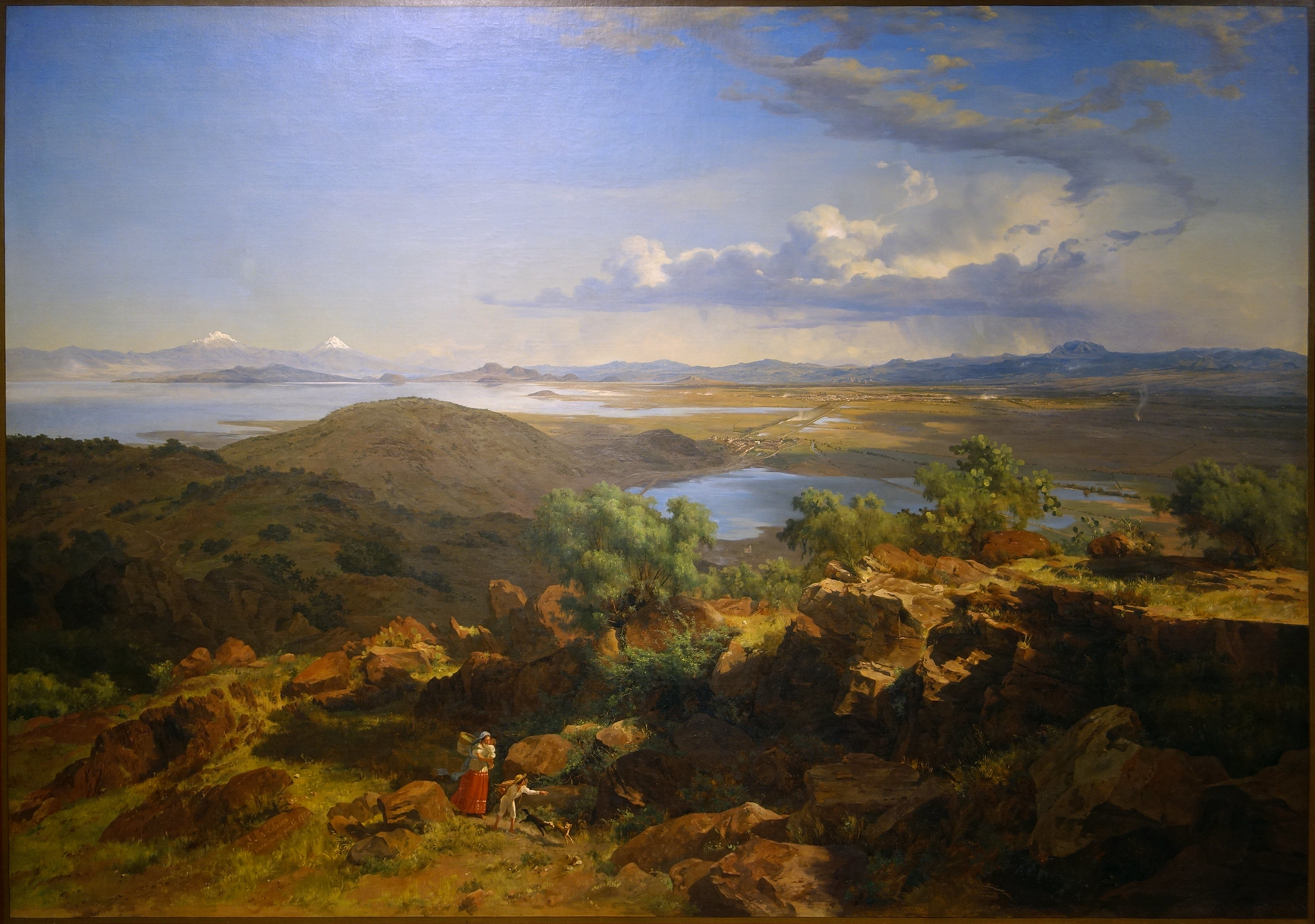
José María Velasco, The Valley of United mexican states from the Santa Isabel Mountain Range (Valle de México desde el cerro de Santa Isabel), 1875, oil on sheet, 137.5 x 226 cm (Museo Nacional de Arte, INBA, Mexico City, photo: Steven Zucker, CC Past-NC-SA 2.0)
An internationally renowned artist who garnered awards at the universal exhibitions of 1876 (Philadelphia) and 1889 (Paris), Velasco painted multiple landscape views of the iconic and historic Valley of Mexico. In the monumental mode of Eugenio Landesio, his teacher at the Academy of San Carlos, Velasco presented expansive, almost panoramic views of this area. Velasco'due south The Valley of Mexico from the Santa Isabel Mountain Range (1875), for case, allows ane to see both the remains of the Aztec majuscule city of Tenochtitlan and the colonial site of the Virgin of Guadalupe's miraculous bogeyman. International viewers applauded these monumental and romantic landscapes, in which the country, sky, and botany triumphed over Mexico'southward indigenous and colonial history.
For Latin American artists who didn't bear the brunt of international criticism (such as Laso in Paris), they withal confronted bourgeois critics back dwelling house (such as Garay in Bogotá). The search for national identity played out differently according to artist and state, just they all shared in the experience of giving pregnant to their indigenous and colonial by while using the lessons of the academy and abroad to forge a new artistic path forward.
Read an essay about Velasco
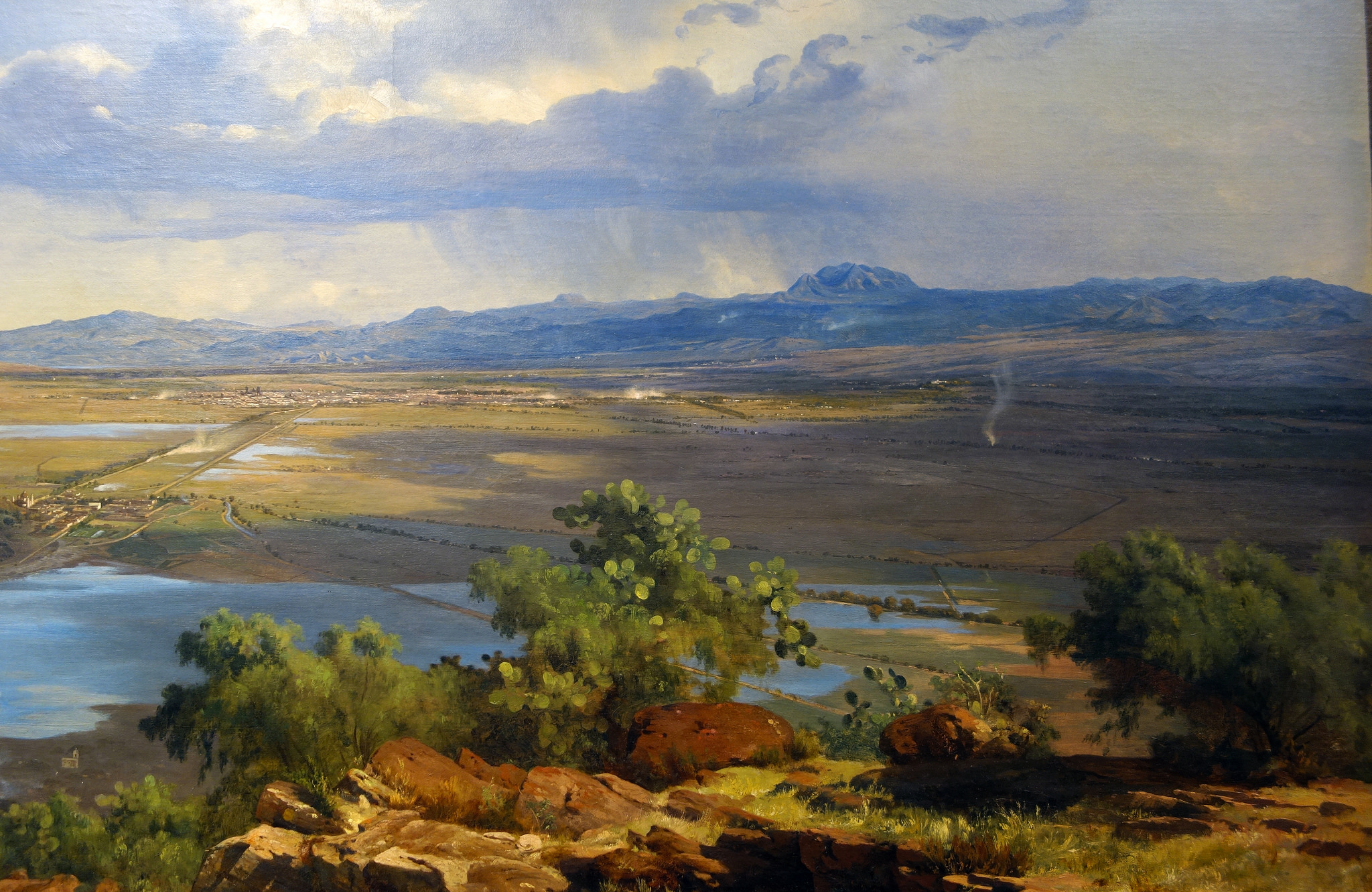
José María Velasco, The Valley of Mexico from the Santa Isabel Mount Range: This painting represents an important period in the development of Mexico's national identity and an important chapter in the history of Mexican fine art.
Read Now
/1 Completed
Key questions to guide your reading
What were the most significant changes that came after independence?
How did artists depict their prehispanic and colonial past?
Jump downwards to Terms to Know
villaltaeforneunt.blogspot.com
Source: https://smarthistory.org/reframing-art-history/art-and-nationalism-in-19th-century-latin-america/
0 Response to "What Is Latin American History What Is Art Appreciation Class"
Post a Comment